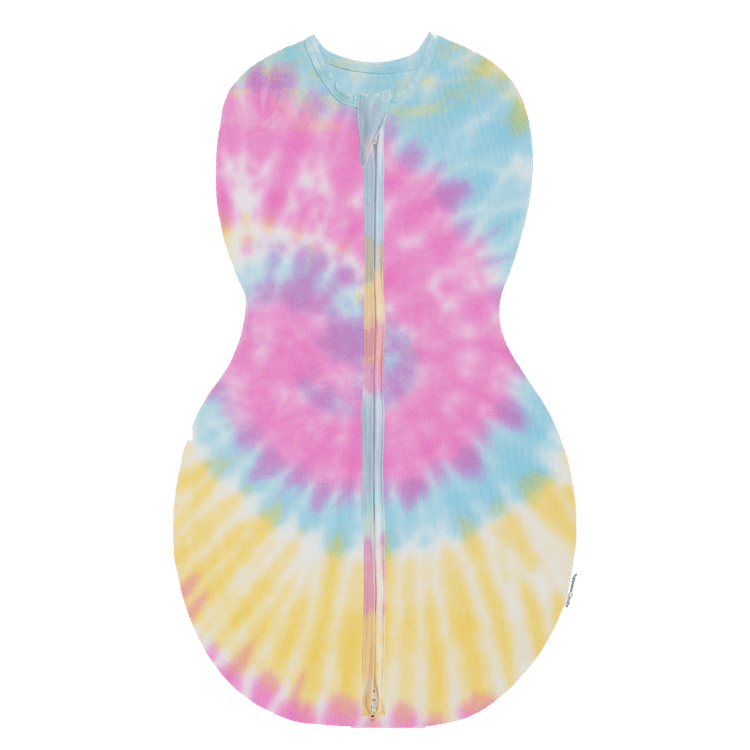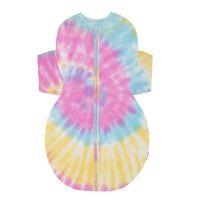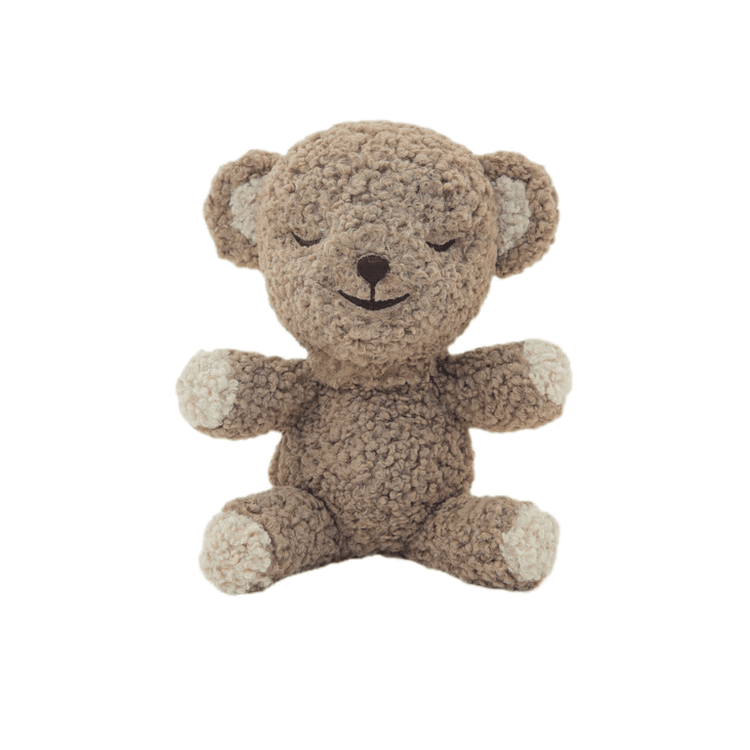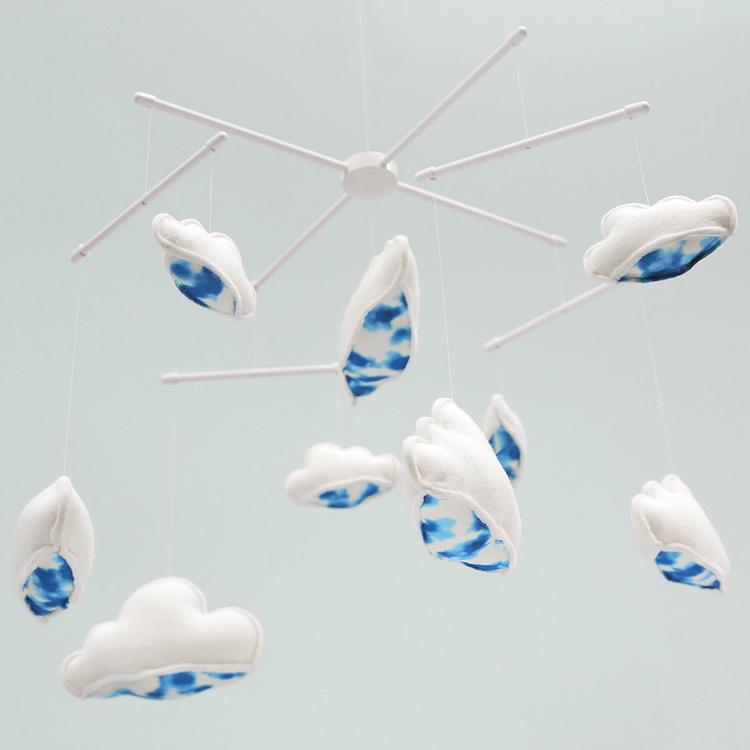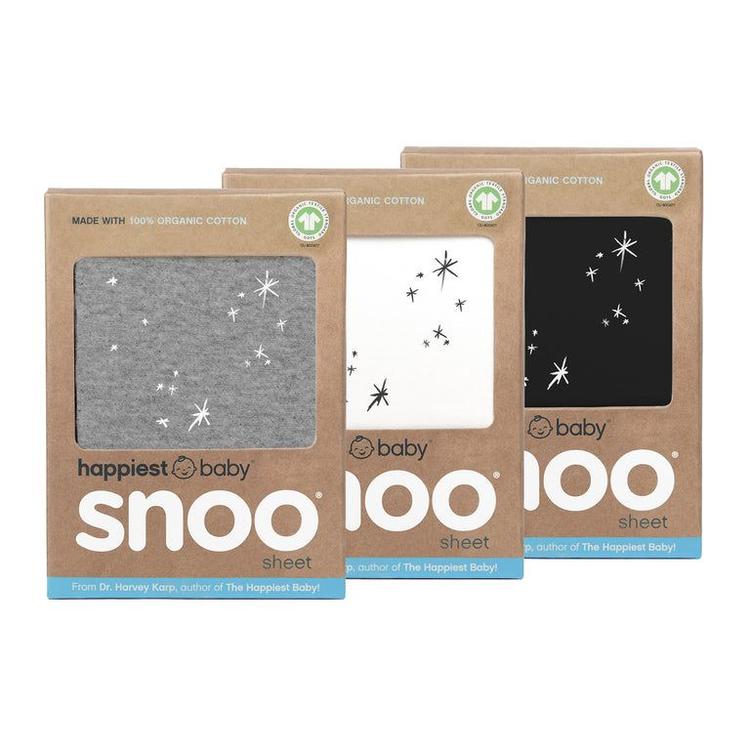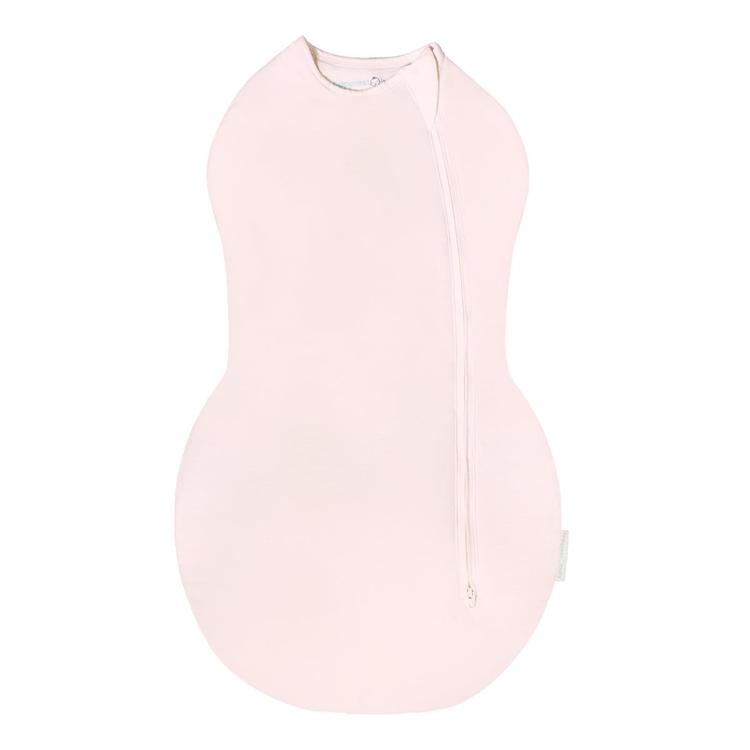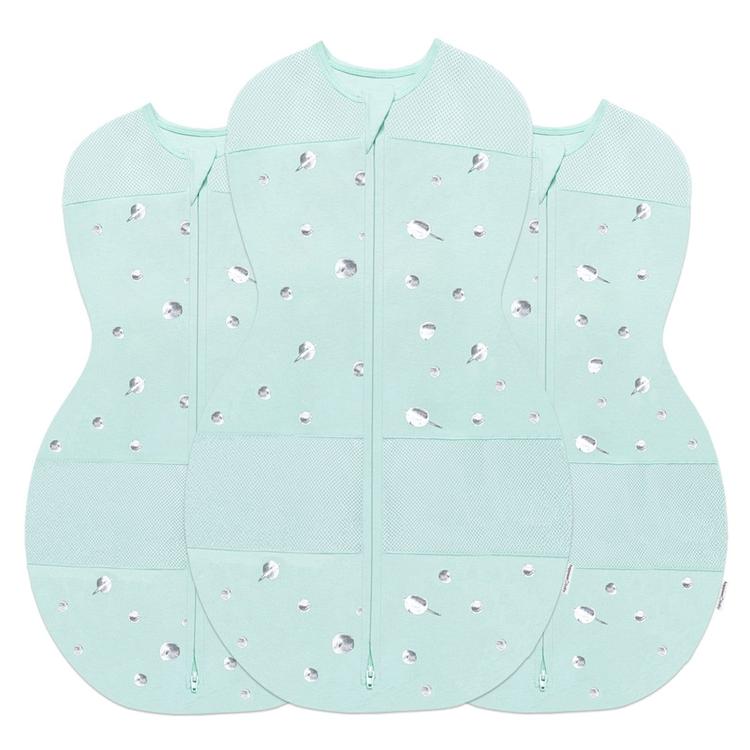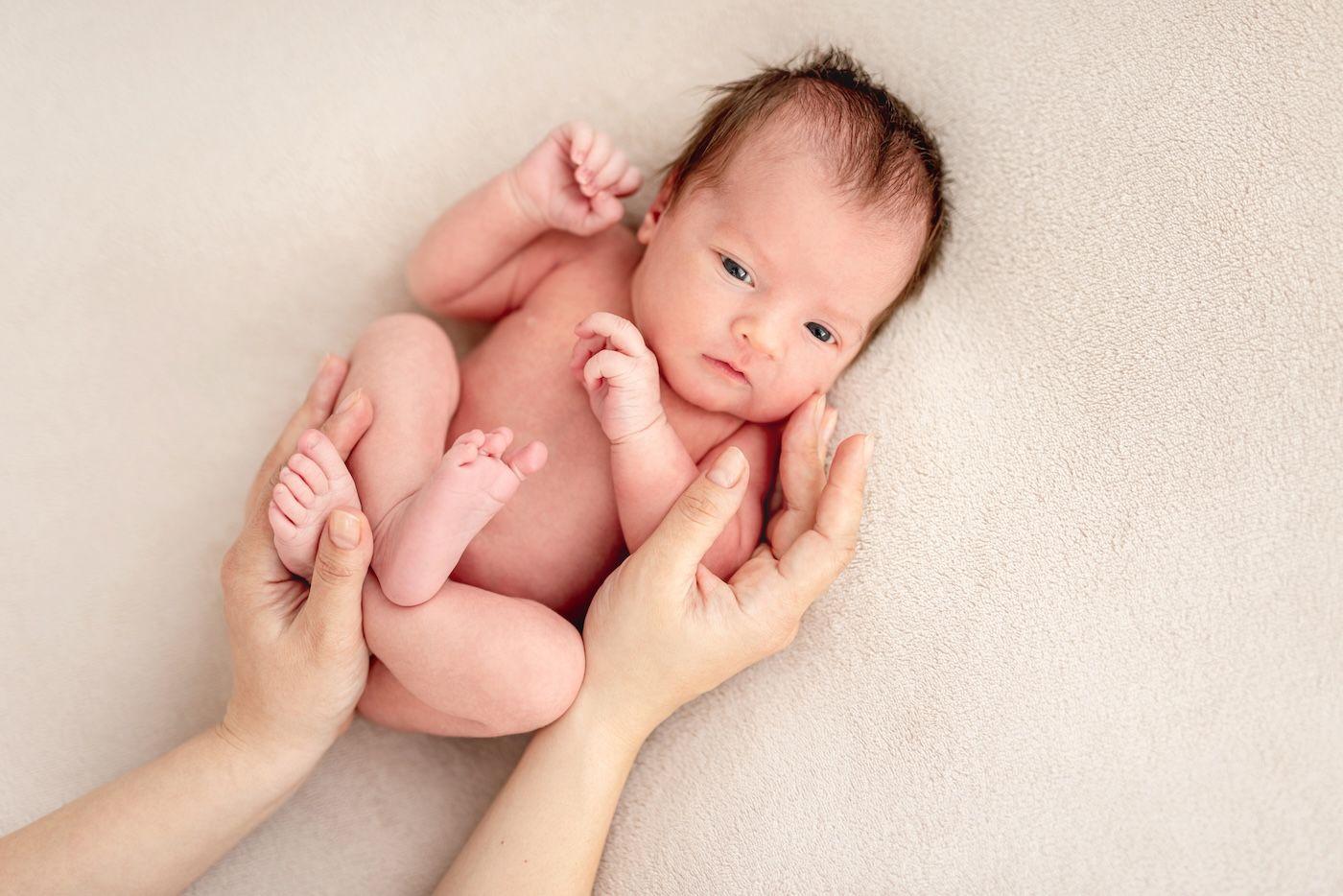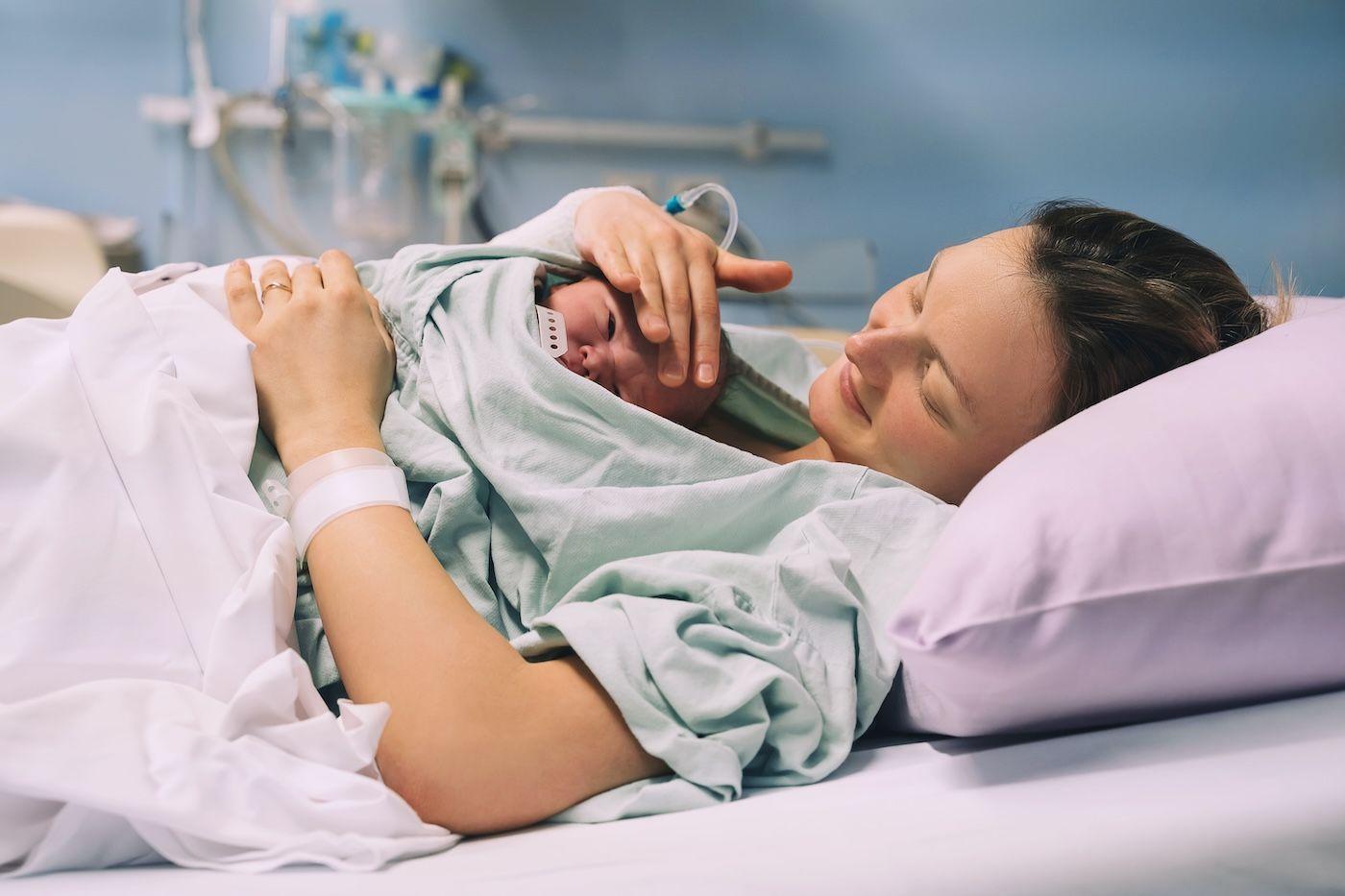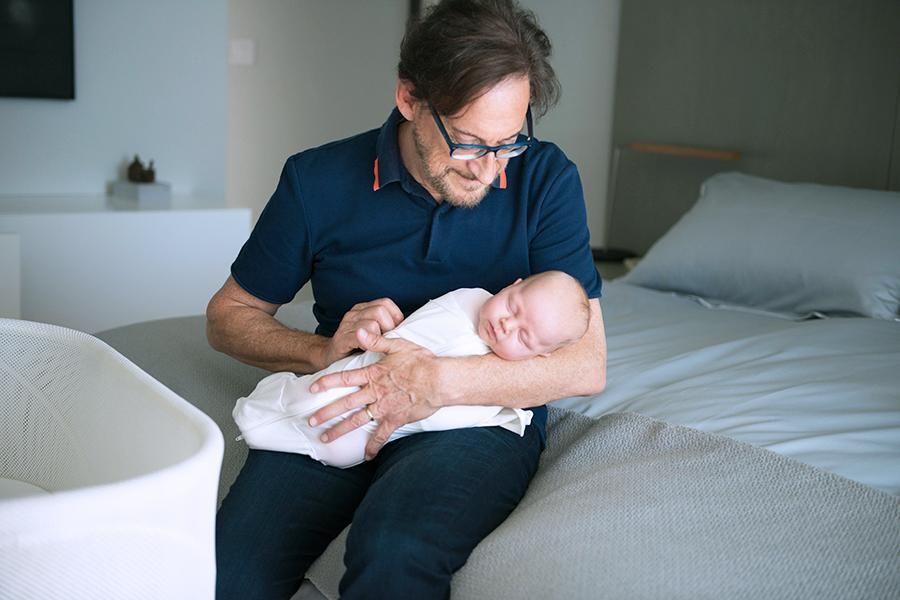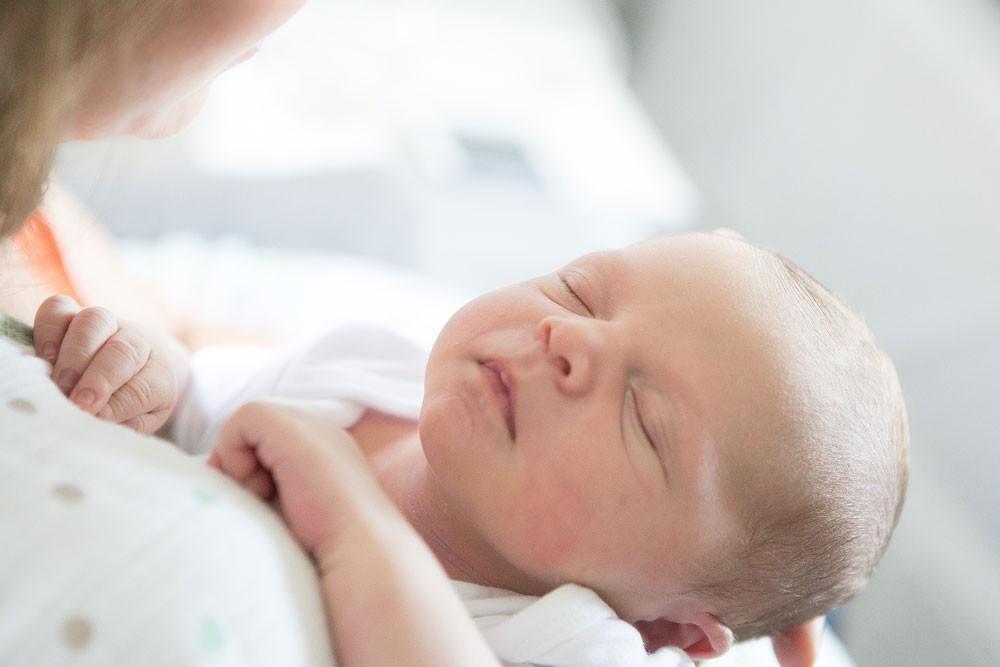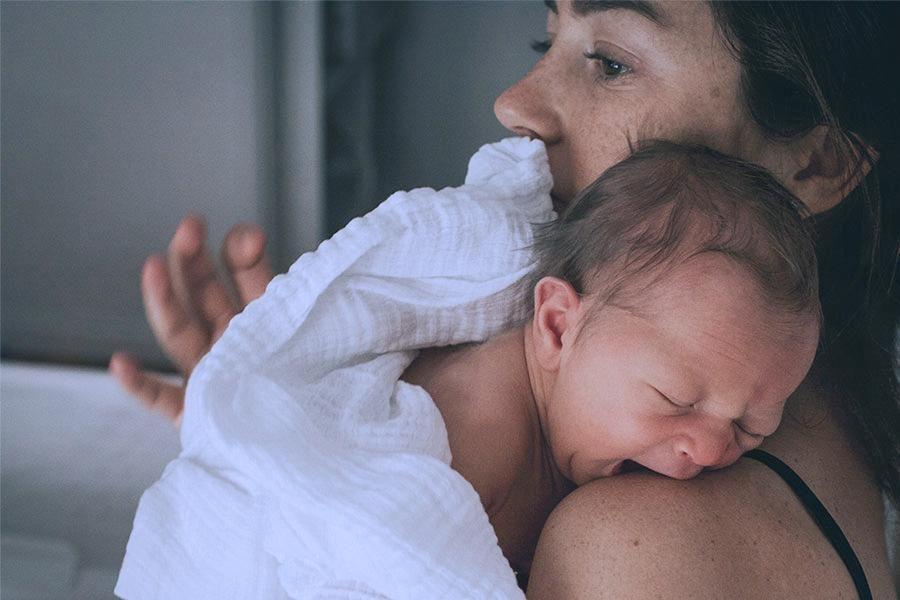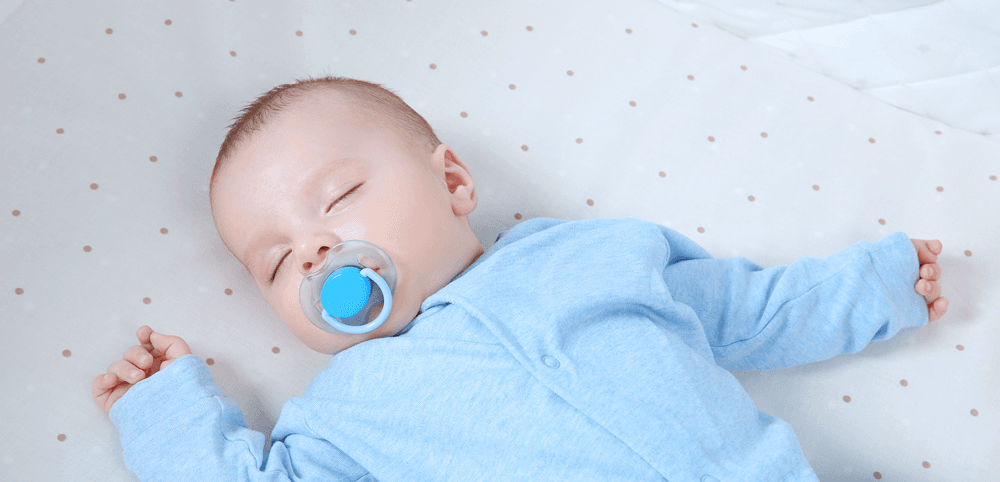Is there anything more irresistible than velvety baby skin? Because we are so used to that oh-so touchable softness, seeing red, scaly patches on your peanut’s skin can come as a shock. If you have noticed dry, flaky rashes on your baby, your little one might be dealing with eczema, a skin infection that affects about 11-20% of children.
Of course, just because it is common does not mean it will not worry you. Here is everything you need to know about baby eczema—including the steps you can take to give your wee one some much-needed relief.
What is baby eczema?
Eczema (aka atopic dermatitis) is a skin condition that causes mega itchiness. It tends to come and go, meaning you will cycle through periods where your child does not have symptoms (known as remission) and stints where they will have flare-ups and the rash gets worse.
You will probably notice eczema for the first time around 3 months, but that telltale rash can show up any time before your child’s 2nd birthday. Some kids will outgrow eczema around age 4, but for others, this uncomfortable skin condition may stick around…even lasting into adulthood.
Eczema can be genetic, meaning it runs in families. Sometimes it goes hand-in-hand with other conditions, like seasonal allergies or asthma. In fact, there is a 30% chance if your kid has eczema, they will also have some type of food allergy.
While eczema is not contagious, unfortunately, it can make your baby more prone to skin infections. Normally a protein in our bodies called filaggrin acts like a sentry maintaining a strong barrier to keep viruses and bacteria out. But people with eczema have less of this protein, which can allow nasty germs to sneak through more easily, boosting the risk of infection.
What does eczema in babies look like?
One of the least fun parts of a parent’s job description is identifying rashes and other icky illnesses—kids can be susceptible to all sorts of rashes. But if it does not itch, then you can probably rule out eczema as the culprit. (Of course, your child's healthcare provider will be able to make a diagnosis, so be sure to ring them up!)
A common rash that is not eczema is seborrhea, or cradle cap. That comes during the first year and has little flaky scales that are waxy or oily. There can be build up on the skin right over the soft spot, between the eyebrows, on the forehead and behind the ears. It is pretty much caused by excess skin oil (and insufficient soap and water).
On the other hand, eczema is a dry, slightly bumpy rash on red irritated skin (and can be pretty itchy). The rash usually pops up in a few patches on the cheeks, but it classically spreads into the sweaty, deep creases of the body: inside the elbows, arm pit, fat rolls, behind the knees, and under the earlobes. A flare-up can look red and even get raw and weepy, or oozing…like a little paper cut. On darker skin, eczema often looks reddish-brown.
Common symptoms of baby eczema include:
- Itchiness
- Dry or tender skin
- Redness in the skin
- Scaly or cracked skin
What triggers baby eczema?
Eczema is often triggered by irritating detergents, that is why we recommend washing clothes in a very mild baby-friendly soap. Food allergies are also a common culprit…even things in the diet of a mum who is breastfeeding. Cow's milk and eggs can trigger the rash, as can citrus, strawberries, soy, nut butter, sea food, etc. Eczema flare-ups can also be set off by:
- soaps and shampoos (especially bubble bath)
- pollen and animal dander
- wool
- dry air
- heat and excessive sweating
- new clothes that have not been prewashed to remove the chemicals
Should babies with eczema bathe daily?
A short bath can be soothing for your baby’s skin—as long as the water is not too hot, because that can inflame symptoms. Stick to mild, unscented soaps. Be sure to gently towel dry your baby’s skin immediately afterward and apply an oil to lock-in moisture.
How to treat baby eczema:
Avoid baby eczema triggers.
Naturally, it helps to figure out your child’s triggers…and avoid them. For instance, if you notice that your lovebug gets a rash after wearing his cute wool romper, you know what to do. Try very mild soap, allergy-free shampoo, nothing with fragrance. Switch what you use to wash your clothes. And use a humidifier if the air in your home is dry.
But, by far the trickiest part is figuring out what food may be shifting the rash into overdrive. Usually that requires an elimination diet. Doctors often recommend trying a different formula and for nursing mums avoid five to 10 foods that might be triggers. The goal is to clear up the rash with some smart steps and then reintroduce the foods—once the rash is gone—to see what makes it come back.
For babies eating solid food, you will want to do a 'food challenge' to help you find which foods are causing the flare-up. You will start with a one to two week avoidance of several foods you think might be causing the problem. When eczema seems to be controlled, try reintroducing the food. If a flare-up occurs—often within a day of eating—that food is probably a trigger.
Start an eczema-safe skincare routine.
While your baby does not need an elaborate skincare routine, there are ways to take care of a baby’s delicate skin when they have eczema. These include:
- Keep the skin lubricated. Using a nice thick nappy cream can protect that skin and a light oil on the body (like coconut or avocado) can keep the skin soft and supple.
- You will want to handle the deep skin creases a little differently. The oil is great when the rash is gone, but if the creases are red and irritated, you will want to keep them dry. Avoid sweaty situations: excessive heat, synthetic clothes (cotton is best), and keep the skin folds dry with a dusting of corn starch powder one to two times a day. (Do not use talcum powder, that can cause serious problems if inhaled.)
- Ten-minute baths can be oh-so soothing. Just make sure the water is not too hot because heat can make symptoms worse. Use a mild unscented soap and avoid bubble baths since some soaps can trigger a flare-up. Important: Once your baby is out of the tub, immediately towel dry, and quickly massage in the oil. That locks the moisture from the bath into the skin and helps reduce the itching.
- Because your child will try to scratch, keep their nails short, or try mittens for babies so they cannot worsen the rash by itching.
- Many doctors recommend using over-the-counter 1% hydrocortisone cream or ointment two to three times a day for a few days, to calm down the rash. You do not want to use OTC cortisone on the face for too many days. Talk to your paediatrician to get their counsel and to see if a stronger prescription cream is necessary.
Will baby eczema go away?
It depends. Some children outgrow eczema by the time they reach 4; others may be dealing with eczema longer...and possibly into adulthood.
When should I see a healthcare provider about baby eczema?
Because eczema causes little breaks in the skin and scratches from intense itching it can pave the way for infection. Call your provider if you notice:
- crusting or scabbing of the skin with a yellow or honey color
- oozing, weeping, or blistering from the site
- a fever
- a rash that is not getting better with treatment
Call your provider if the rash is painful, or your child is acting sick. Do not hesitate to talk to your child's provider if you have any questions or concerns.
Dealing with eczema can be stressful (and, yes, kind of icky), but your provider can help you come up with a treatment plan to keep your kid comfortable in their skin!



